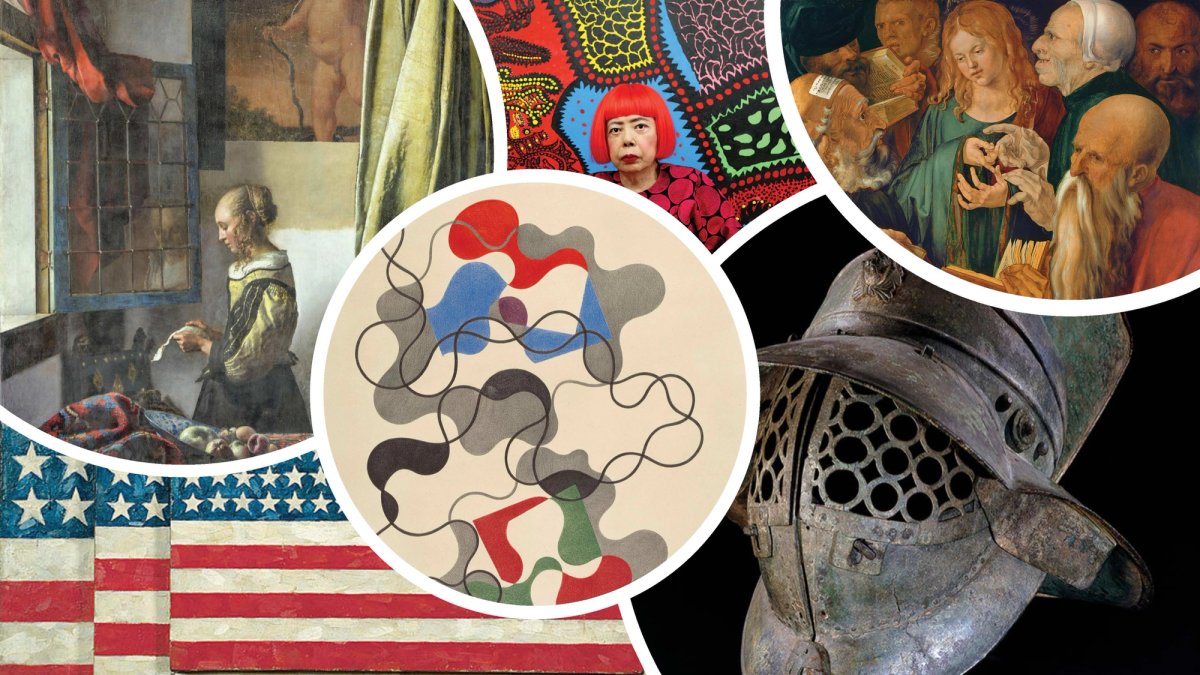While last year was a disaster for exhibition programming around the world, museums and curators have not been idle and there are plenty of ambitious exhibitions due to open this year (virus-related lockdowns notwithstanding). Below you will find some of the must-see shows of 2021, from the Rijksmuseum’s examination of the slave trade and a reassessment of the Roman arch-villain Nero, to landmark retrospectives for Barbara Kruger, Yayoi Kusama, Sophie Taeuber-Arp and Jasper Johns.
*Many exhibitions will be subject to Covid-19 restrictions—please check on the respective museum website before visiting
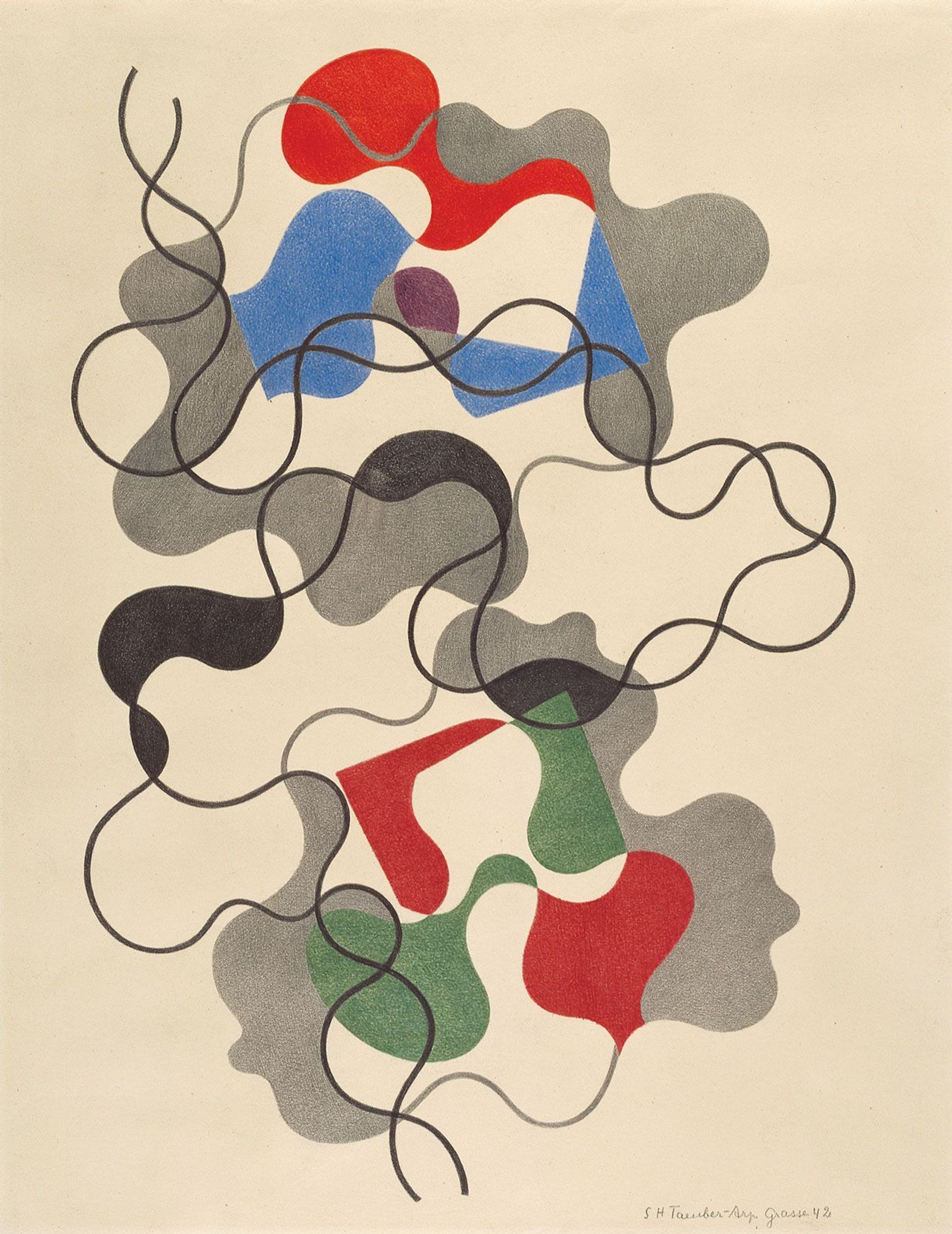
Sophie Taeuber-Arp's Lignes d’été (1942) © 2020 Stiftung Arp e.V., Berlin/Rolandswerth / Artists Rights Society (ARS), New York
Sophie Taeuber-Arp: Living Abstraction
Kunstmuseum Basel, 20 March-20 June; Tate Modern, London, 15 July-17 October; Museum of Modern Art, New York, 21 November-12 March 2022
The pioneering but sometimes overlooked artist Sophie Taeuber-Arp is best-known for her geometric abstractions and her association with Dada alongside her husband, the German-French sculptor Jean (Hans) Arp. A major travelling survey—beginning at the Kunstmuseum Basel before heading to London’s Tate Modern and ending at the Museum of Modern Art (MoMA) in New York—will aim to show how Taeuber-Arp contributed to the history of abstraction “through her steady commitment to innovation and experimentation” and how she advanced “the understanding of what abstraction meant,” says the MoMA curator Anne Umland. Taeuber-Arp studied textile design, dance and applied arts and crafts, before becoming a central figure of the Cabaret Voltaire, collaborating with Arp and other notable figures such as Tristan Tzara, Jean Cocteau and Marcel Duchamp. In the mid-1920s Taeuber-Arp cultivated her signature Constructivist style, producing a body of vibrant compositions containing coded references to cosmic symbols and the sublime. The exhibition will comprise around 400 pieces beginning with early architectural and interior design commissions and ending with abstract line drawings produced shortly before the artist’s accidental death in 1943.
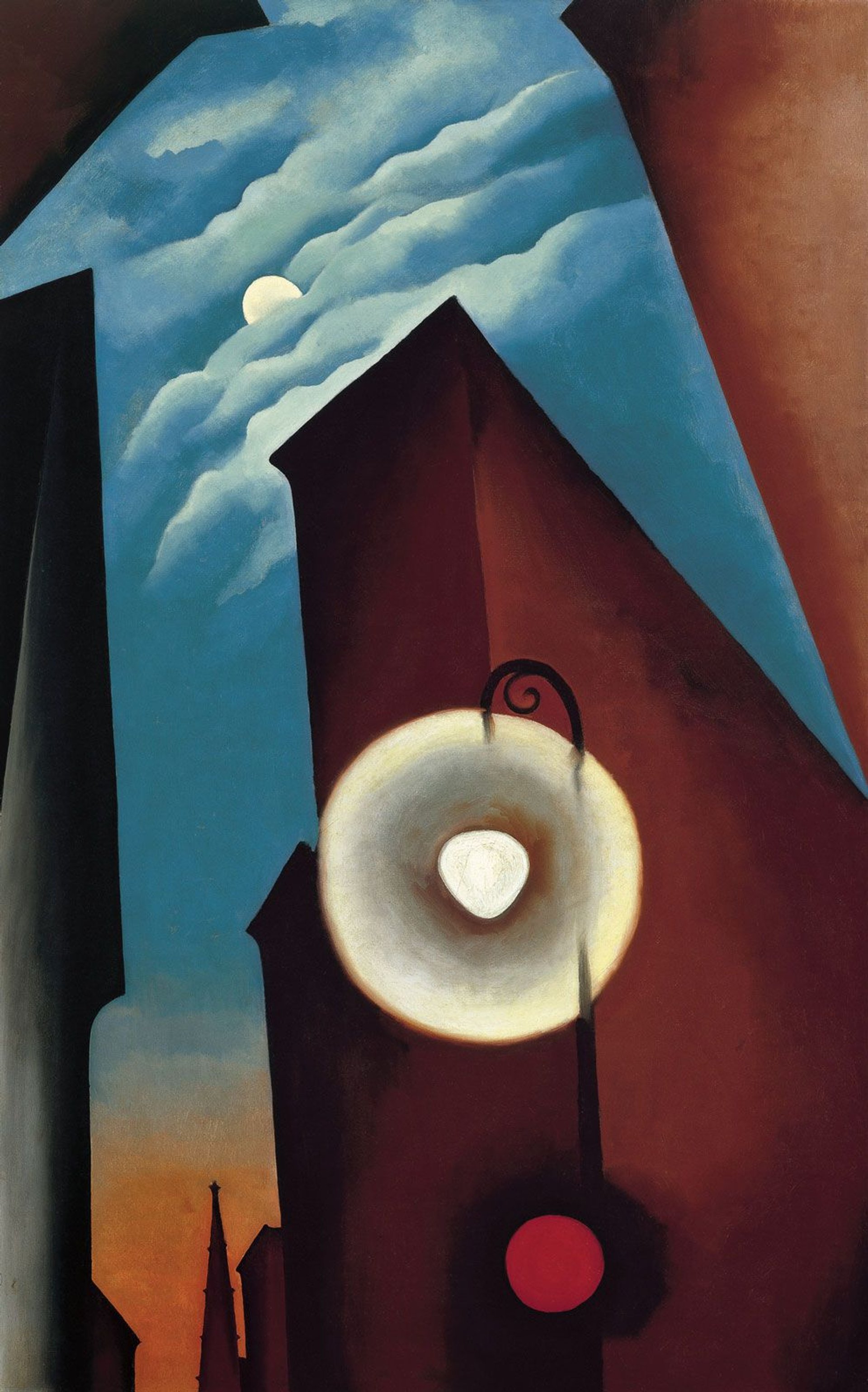
Georgia O'Keeffe's New York Street with Moon (1925), one of around 80 works in the show Carmen Thyssen-Bornemisza Collection
Georgia O’Keeffe
Museo Thyssen-Bornemisza, Madrid, 20 April-8 August; Centre Pompidou, Paris, 8 September-6 December; Fondation Beyeler, Basel, 23 January 2022-22 May 2022
Although heavily researched back home in the US, few major studies have been devoted to Georgia O’Keeffe in Europe. Now, a sweeping survey will give audiences across the continent a chance to explore the life and work of the pioneering American Modernist, beginning at Madrid’s Museo Thyssen-Bornemisza before travelling to the Centre Pompidou and the Fondation Beyeler. “The opportunity to analyse her at three institutions steeped in the history of European Modernism makes it possible to place her work in a global context,” says the curator Marta Ruiz del Árbol. The show will also allow the museums to “offer a European perspective on the apparently very American phenomenon of Georgia O’Keeffe”. Since it is the first time her work will have been shown on such a scale in all three cities, around 80 paintings have been chosen to provide a wide-angle view of the artist’s lengthy career. Among them will be New York Street with Moon (1925), the first of a series depicting the city’s streetscapes, and Jimson Weed/White Flower No. 1 (1932), the most expensive painting by a woman artist sold at auction. For the Museo Thyssen-Bornemisza, which owns five paintings by O’Keeffe—the largest number in an institution outside the US—this solo show has been a long time coming. It will also mark a return to Spain for the artist, who travelled there twice in the 1950s.
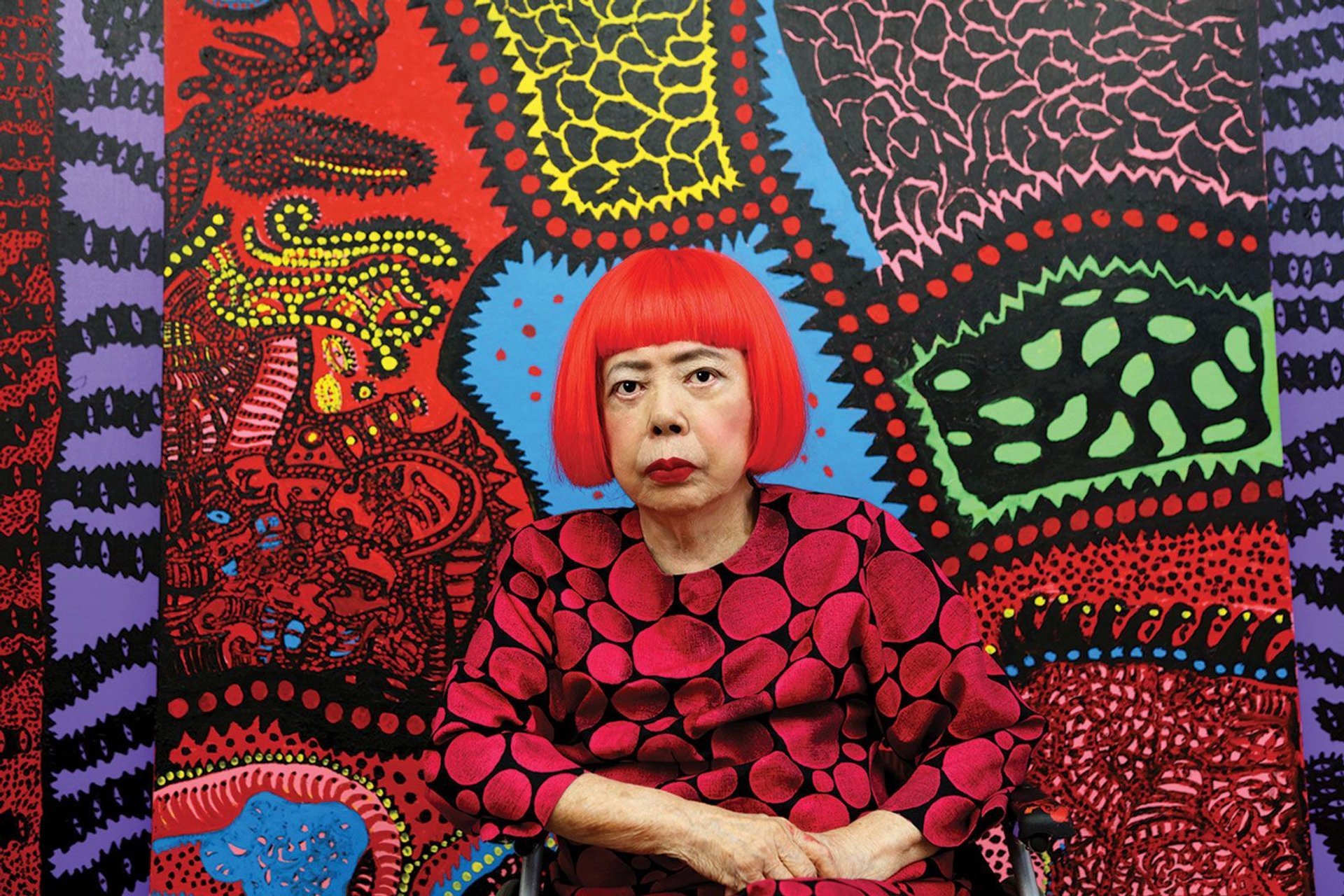
The colourful life of Yayoi Kusama is explored in her first German retrospective © Yayoi Kusama; Courtesy of Ota Fine Arts, Victoria Miro & David Zwirne
Yayoi Kusama: A Retrospective
Gropius Bau, Berlin, 23 April-15 August; Tel Aviv Museum of Art, 2 November-23 April 2022
Eight of Yayoi Kusama’s most important exhibitions, which took place between 1952 and 1983, will be recreated for a retrospective of the Japanese artist’s work in Berlin this spring. The restaging of the shows will illustrate how the artist’s use of space developed and how she harnessed a multitude of mediums in her career, which now spans 70 years. As well as a brand-new Infinity Mirror Room, specially made for the occasion, the show will also look back at lesser-known early works. Among these will be an oil painting on paper, Accumulation of Corpses (Prisoner Surrounded by the Curtain of Depersonalization) (1950), and a collage of fake dollar bills, Untitled (around 1962-63)—reminiscent of the work of her friend Andy Warhol—as well as documentation of nude public performances, such as the naked anti-war happening on Brooklyn Bridge in 1968. The exhibition, which will be the first German retrospective of the artist, will also travel to Tel Aviv in the autumn. Meanwhile, a year-long display of two Infinity Mirror Rooms will finally open at Tate Modern in London after being postponed last year due to the pandemic (29 March- 27 March 2022).
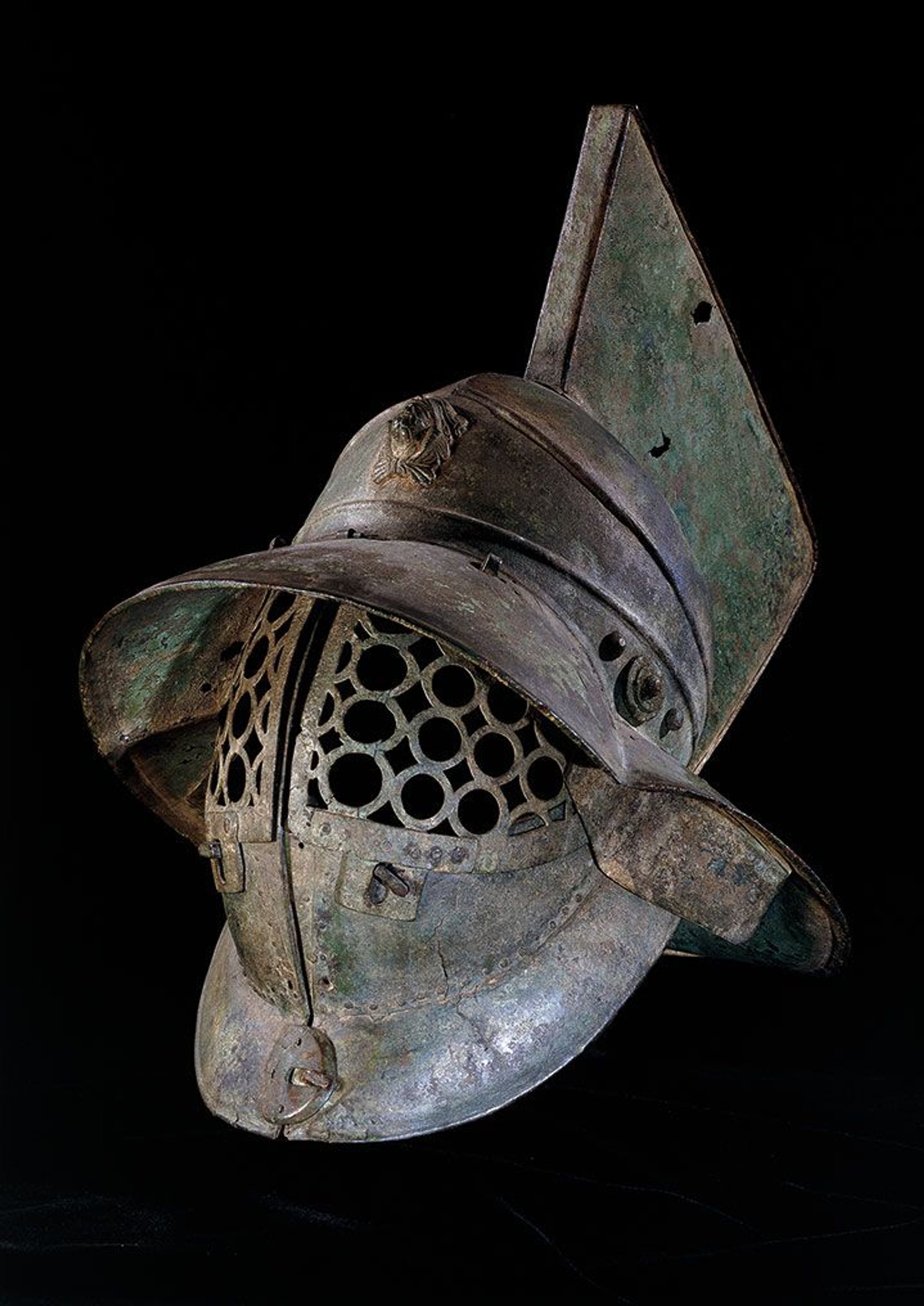
A 1st-century AD bronze gladiator’s helmet from Pompeii © The Trustees of the British Museum
Nero: the Man Behind the Myth
British Museum, London, 27 May-24 October
Was Nero (AD37-AD68) really the matricidal madman presented in history books, or could these popular depictions of the Roman Emperor be ancient examples of fake news? That is among the questions to be considered in the British Museum’s exhibition on the Julio-Claudian ruler everyone loves to hate. “It is astonishing how much of what we think we know about Nero is based on very openly hostile sources,” says the show’s curator Thorsten Opper. “In the end, one particular, very hostile elite view won out.” The exhibition follows Nero’s life and reign, looking at the driving factors behind key events and how they were later perceived. Themes pertinent to his rule such as spectacle and family are explored through more than 200 objects, ranging from humble Pompeian graffiti to artefacts destroyed during the Great Fire of Rome in AD64. “Our aim is not to reveal a ‘good’ Nero behind the clichéd ‘monster’, but to show that there were very different perceptions and narratives,” Opper says. “History gets manipulated, we need to understand why and how.”

Qaran Unhorses Barman, a folio from the Shahnameh of Shah Tahmasp, Tabriz (around 1523-35) © The Sarikhani Collection
Epic Iran
Victoria and Albert Museum, London, 29 May-12 September
Epic by name and epic by nature, this exhibition will cover an ambitious 5,000 years of Iranian history through 350 objects. A saga in itself, the show has had to contend with funding complications courtesy of the Sackler scandal (over the family’s involvement in the opioid crisis); increasingly tense US-Iran relations; and the coronavirus pandemic scuppering its original opening date last year. Split into ten sections, the exhibition will have an “immersive design” that apparently sets it in a city, complete with a gatehouse, gardens, a palace and a library. Starting in 3200BC, the show will explore the ancient Persian Empire; Sassanid rule and Zoroastrianism; the ensuing emergence and establishment of Islam; and the royal Qajar dynasty. The final section will include Modern and contemporary works by some of Iran’s leading artists including Parviz Tanavoli, Monir Farmanfarmaian and Shirin Neshat. Literature is an overarching theme of the show, with a section devoted to poetry and its use in manuscripts and another dedicated to Ferdowsi’s 11th-century epic poem Shahnameh (book of kings). The display of these rare illustrated manuscripts—on loan from the Oxfordshire- based Sarikhani Collection and the British Library, among others—is sure to be a highlight. The exhibition will also include recently restored plaster casts of life-sized warrior friezes that adorned the Palace of Darius two millennia ago.
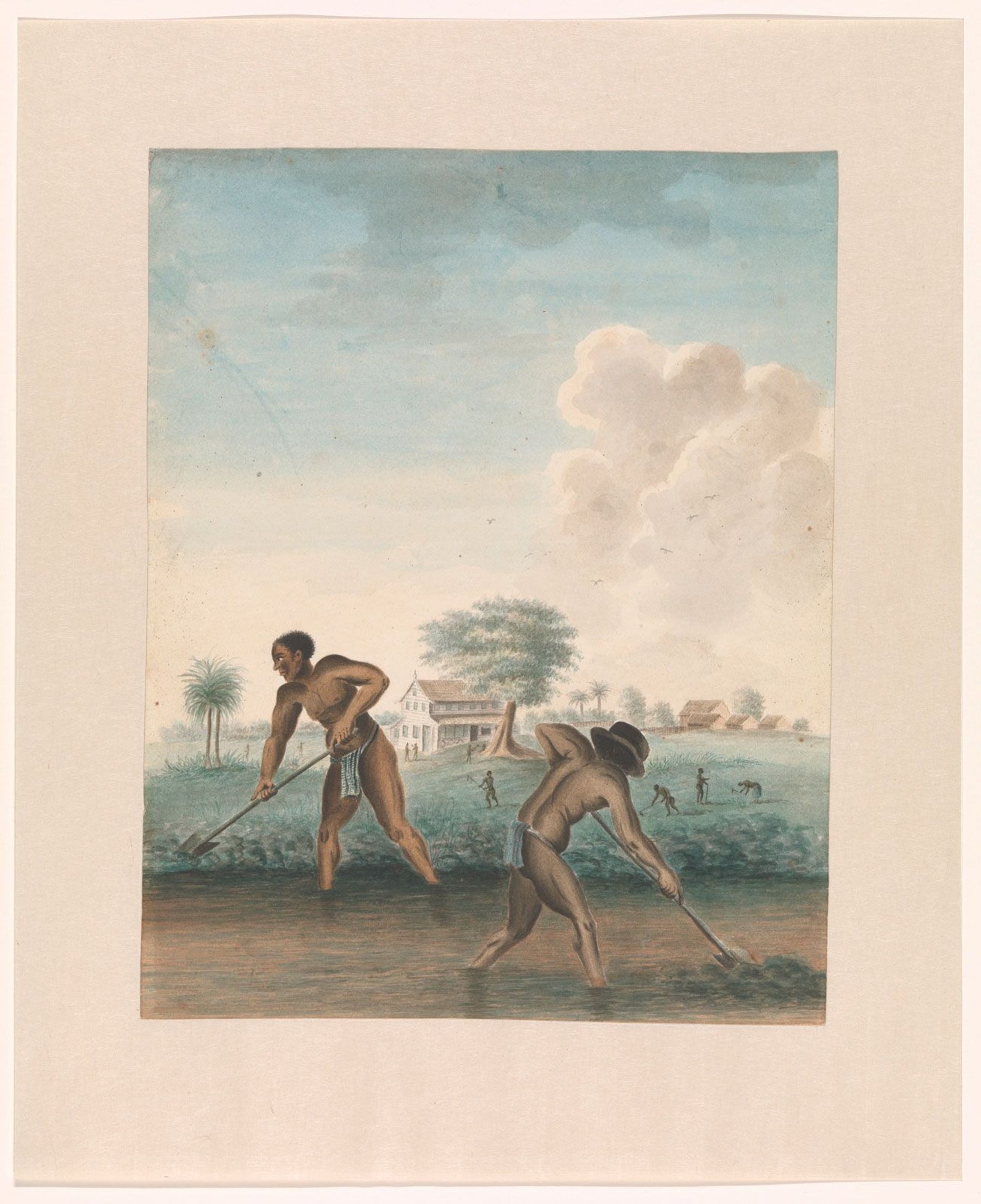
Enslaved man working on the fields (around 1850) by an unknown artist Rijksmuseum
Slavery
Rijksmuseum, Amsterdam, spring (opening end of May)
The Rijksmuseum will take on 250 years of colonial history spanning four continents for its forthcoming Slavery exhibition, which considers the slave-trading networks both across the Atlantic and the Indian Oceans. It will be organised around the life stories of ten individuals, including enslaved people, slave owners and those who resisted the system. The audio guide will feature oral histories, songs and speakers with a “personal link” to those figures, helping to immerse visitors in the “emotional, human experience” of slavery, according to Valika Smeulders, the Rijksmuseum’s head of history and a specialist in the presentation of slavery in museums. The curators also consulted a diverse panel of external scholars and community leaders because “we are not working on the exhibition from an ivory tower”, Smeulders says. The 140 exhibits will bring together leg cuffs used to shackle enslaved people and tools from the plantations, with luxurious objects associated with those in power, such as Rembrandt’s portraits of a sugar scion and his wife and a Dutch West India Company golden box presented to William IV.

Albrecht Dürer painted Christ Among the Doctors (1506) in just five days while in Italy working on an altarpiece © Museo Thyssen-Bornemisza, Madrid
Dürer’s Journeys: Travels of a Renaissance Artist
Suermondt-Ludwig-Museum, Aachen, 18 July-24 October; National Gallery, London, 20 November-27 February 2022
At a time when travel was difficult, dangerous and expensive, Albrecht Dürer was rarely still, criss-crossing Europe in the late 15th and early 16th centuries gathering ideas and techniques, making contacts among artists and clients, and steadily spreading his own fame. An exhibition at London's National Gallery will be the first to track the importance of Dürer's excursions, to places like Italy and the Low Countries, for the development of his work and their wider influence. “His reputation as the most innovative printmaker of his time preceded him,” says the National Gallery’s deputy director Susan Foister. “His constant, questing intellectual curiosity opened up fruitful exchanges with artists in the north and south of Europe.” The show will include small sketches that Dürer made in silverpoint of landscapes, plants, animals and people during his travels (as well as a note that his wife’s handbag has been stolen). Many of the works will be on display in the UK for the first time. One highlight will be Christ Among the Doctors (1506) from the Thyssen-Bornemisza Museum. The crowded composition, of grey heads around the young Messiah, was made while Dürer was in Venice working on an altarpiece. It is inscribed “opus quinque dierum”, a typically swaggering boast that Dürer had dashed it off in just five days. The London leg of the show had been scheduled for spring, but will now open in the autumn after a larger version of the show will debut at the Suermondt-Ludwig-Museum in the summer.
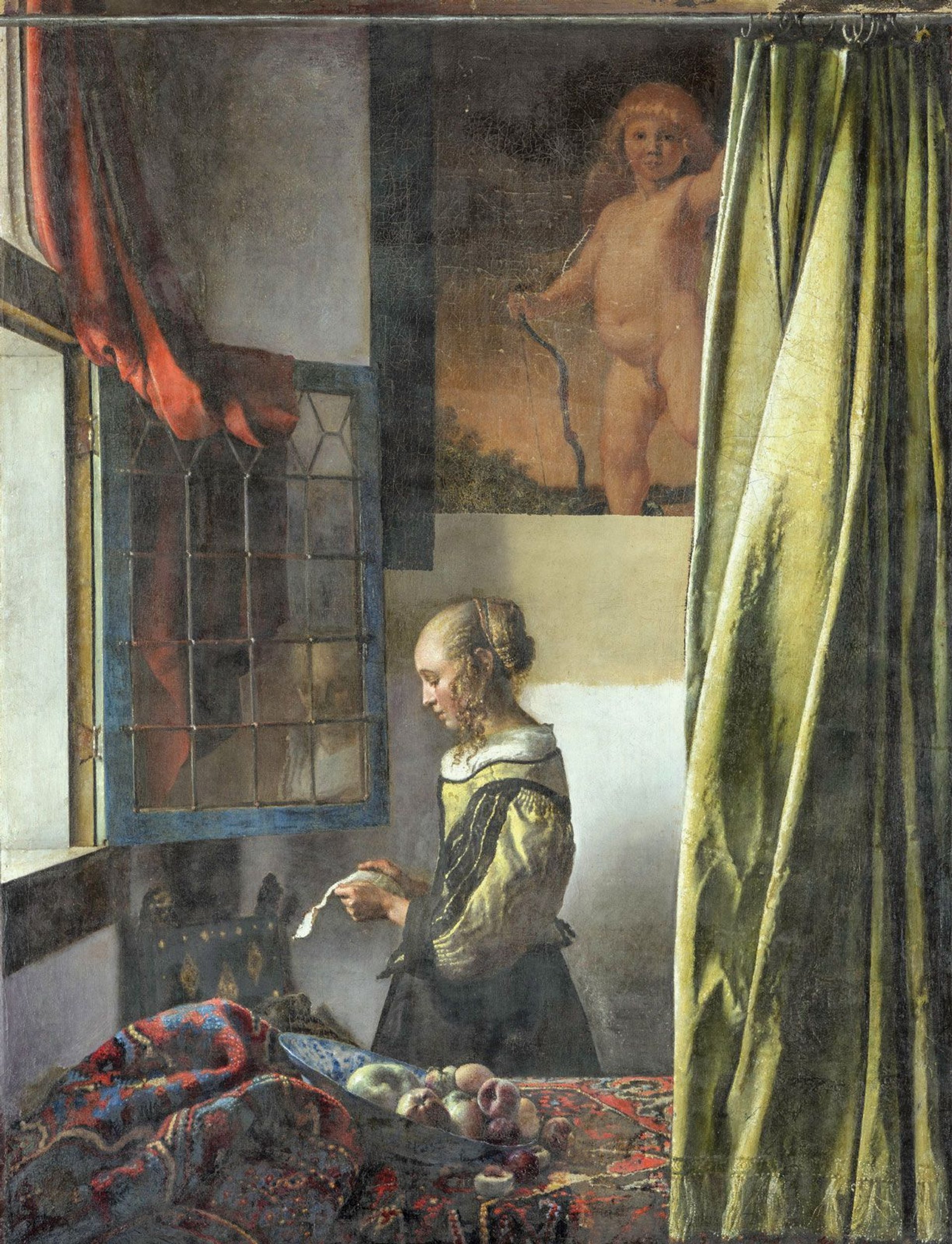
During restoration, a hidden painting was revealed in Vermeer's Girl Reading a Letter at an Open Window (around 1659) © SKD, Foto: Wolfgang Kreische
Vermeer: On Reflection
Gemäldegalerie Alte Meister, Dresden, 10 September-2 January 2022
Although the Gemäldegalerie Alte Meister’s Vermeer exhibition will include important loans such as Woman in Blue Reading a Letter (around 1663), from the Rijksmuseum in Amsterdam, and Young Woman Standing at a Virginal (around 1670-72), from London’s National Gallery, the star of the show will be a painting from the city’s public collection. Girl Reading a Letter at an Open Window (around 1659) was recently restored and cleaned to reveal a painting within the painting. The hidden picture of a cupid had been detected by X-rays four decades ago but its overpainting had been assumed to have been done by Vermeer himself. However, more recent research pointed to it having been covered over long after the Dutch artist’s death. So, in 2017, restorers began to carefully remove the layers of paint, uncovering the naked cupid that had been hidden for 250 years. Vermeer’s ten paintings will be contextualised by more than 40 works by other Dutch genre artists including Pieter de Hooch.
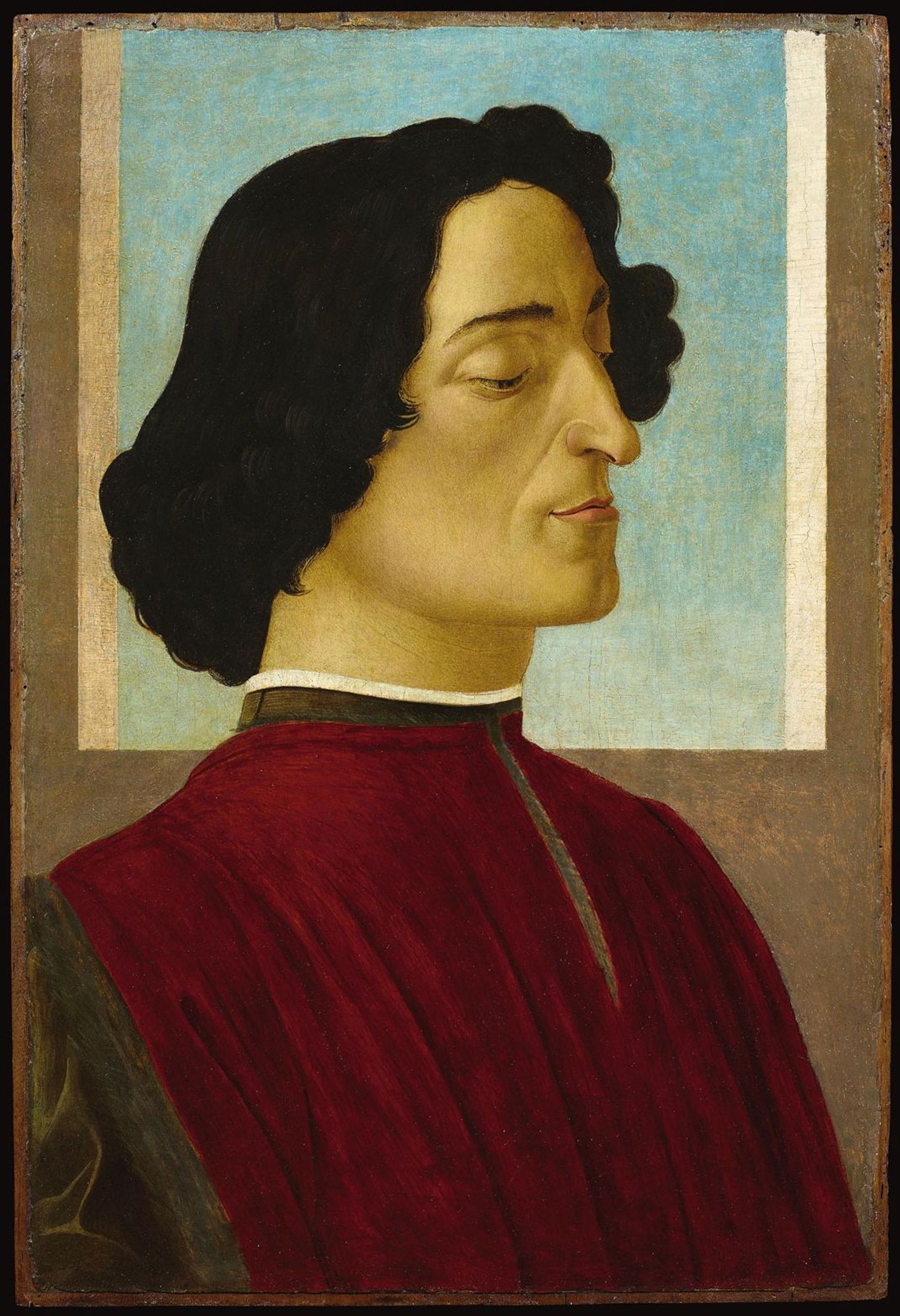
Sandro Botticelli's Portrait of Giuliano de' Medici (1478-80) © Fondazione Accademia Carrara, Bergamo
Botticelli
Musée Jacquemart-André, Paris, 10 September-24 January 2022
A major survey of the Italian Renaissance artist Sandro Botticelli is due to open this autumn at the Musée Jacquemart-André in Paris. It will include masterpieces from important US and European collections, such as Madonna and Child (1467-70) from the Musée du Louvre; The Return of Judith to Bethulia (1469-70) from the Cincinnati Art Museum; Judith Leaving the Tent of Holofernes (1497-1500) from the Rijksmuseum; and Portrait of Giuliano de' Medici (1478-80) from the Fondazione Accademia Carrara. Botticelli will be presented as a “designer, the head of a major studio in Florence producing paintings—of course—but also drawings for embroideries, marquetry, prints and illuminations,” says the exhibition co-curator Pierre Curie. The exhibition will demonstrate how the artist alternated between the production of one-off paintings and works produced in series, often by his many assistants, reflecting how his studio was transformed into a laboratory of ideas and training centre characteristic of the Italian Renaissance, say the organisers. Works by other leading 15th-century artists such as Verrocchio and Fra Filippo Lippi will also feature.

Barbara Kruger's Thinking of You. I Mean Me. I Mean You. (2019)
Barbara Kruger: Thinking of You, I Mean Me, I Mean You
Art Institute of Chicago, 19 September-24 January 2022; Los Angeles County Museum of Art, dates TBC
This comprehensive retrospective devoted to the American conceptual artist Barbara Kruger—best-known for her direct political collages combining text and images—includes work from the past four decades that explore the artist’s role in advancing feminist cultural critique. The exhibition, named after Kruger's text work Thinking of You. I Mean Me. I Mean You. (2019), will feature collages, installations, videos and rarely seen works from the 1980s. It is due to open at the Art Institute of Chicago in the summer before travelling to the Los Angeles County Museum of Art, but with new US museum closures due to the Covid-19 pandemic, the exhibition may be delayed, according to a museum spokeswoman. A site-specific installation in conjunction with the show is planned for the atrium of the Museum of Modern Art in New York. In Chicago, the exhibition will spill out onto the streets, with Kruger’s work visible on billboards, buses and public transport tickets, recalling the artist’s early street interventions, in which she splattered bold aphorisms in public that vocalised topics around politics, consumerism and bodily autonomy.
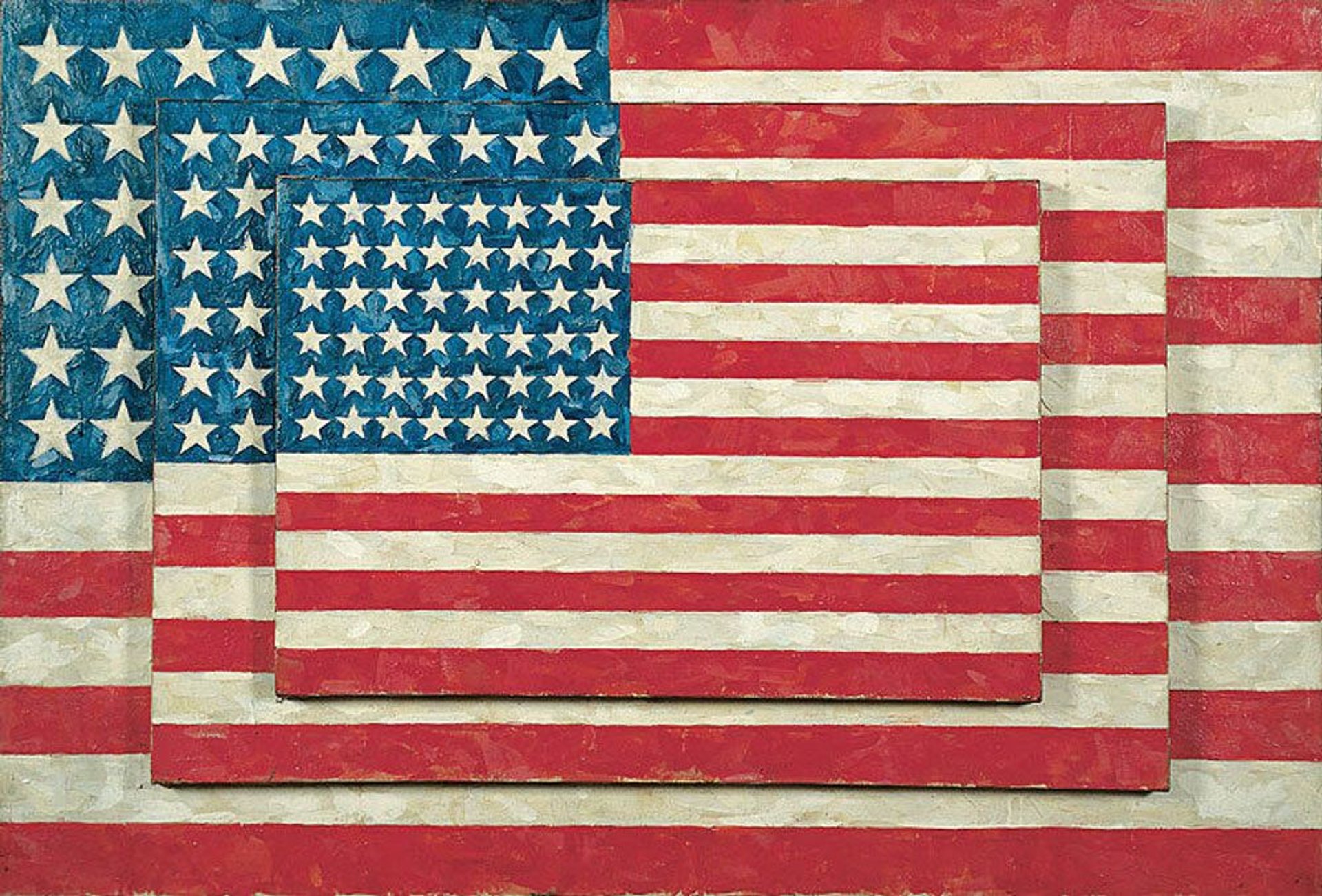
Jasper Johns's Three Flags (1958) © Jasper Johns/Licensed by VAGA, New York
Jasper Johns: Mind/Mirror
Philadelphia Museum of Art, Philadelphia, 28 September-13 February 2022; Whitney Museum of American Art, New York, 29 September-13 February 2022
The largest retrospective ever on Jasper Johns is so big that it will take place simultaneously across two museums, 100 miles apart. The collaboration between the Whitney Museum of American Art in New York and the Philadelphia Museum of Art (PMA) will see twinned exhibitions, playing off Johns’s use of repetition and mirroring in his work. “Galleries at each venue will serve as cognates, echoes and inversions of their counterparts at the other,” says the PMA’s curator Carlos Basualdo. Both shows will be chronological and have galleries that correspond but do not necessarily repeat. Each will have a room recreating important early shows at the Leo Castelli Gallery in the 1960s, and a pair of thematic galleries exploring Johns’s best-known motifs: numbers and flags. At the PMA different versions of his number work 0 through 9 (1961) will be brought together; at the Whitney, the artist’s coloured flag works will be hung opposite his monochrome versions in a “face-off”.
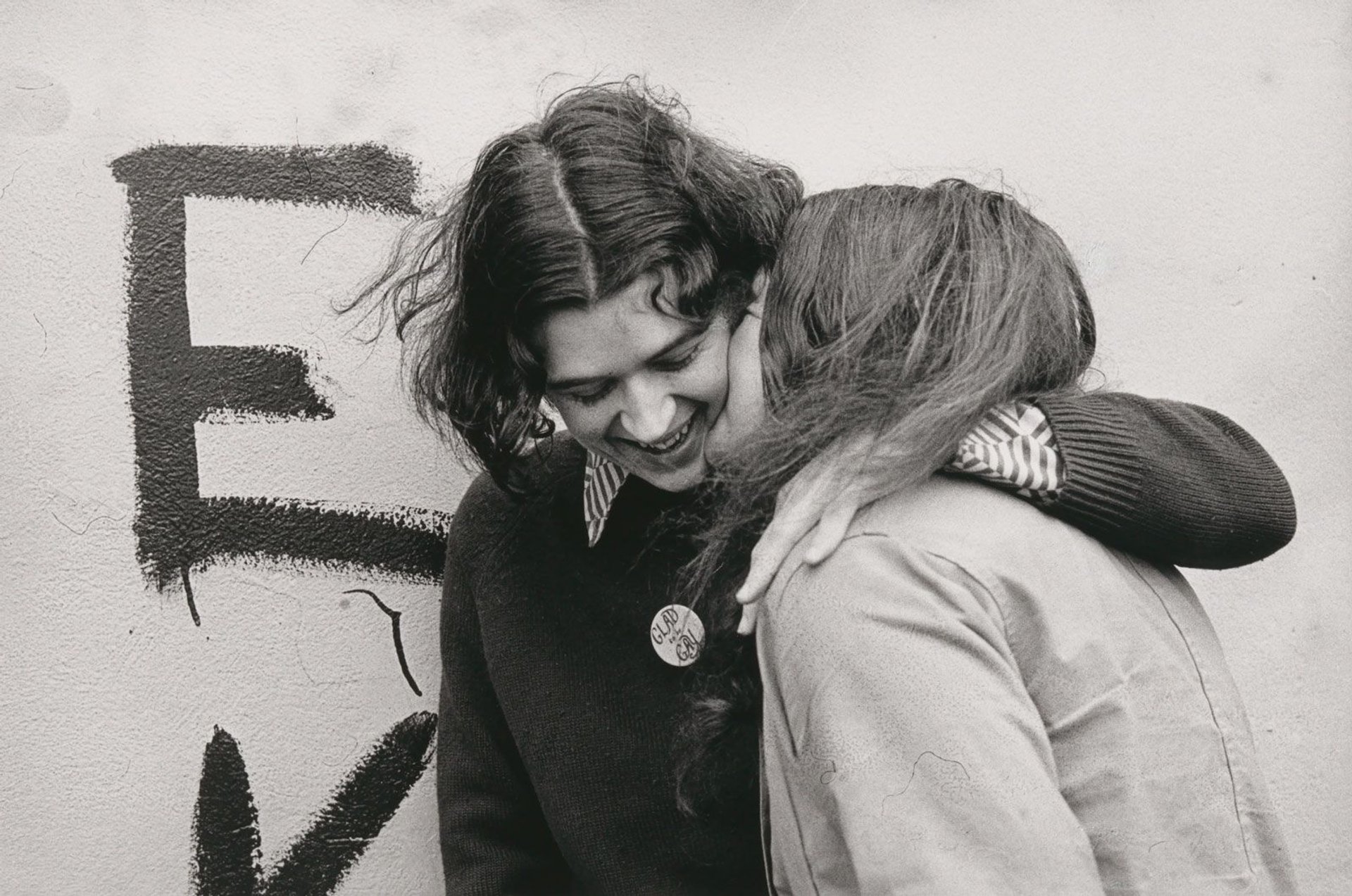
Ponch Hawkes’s No title (Two women embracing, ‘Glad to be gay’) (1973) © Ponch Hawkes, 2018
Queer
NGV International, Melbourne, 10 December-June 2022
Touted as the biggest queer-themed show ever staged by an Australian institution, Queer will take around 300 works from the collection of the National Gallery of Victoria (NGV) in Melbourne “to interpret queer concepts and stories in surprising and thought-provoking ways”, says the NGV’s director Tony Ellwood. Embracing the multifaceted, amorphous boundaries of its subject, there will be no set-in-stone rules for what qualifies as “queer”. Some will be work by queer artists, such as the boundary-pushing late Australian performance artist Leigh Bowery, whose outfit The Metropolitan (around 1988) pairs a floral satin gown with a face covering, a Kaiser helmet and a pair of camouflage print leather gloves. Others will document queer people and histories, such as Ponch Hawkes’s No title (Two women embracing, ‘Glad to be gay’) (1973), which shows two women kissing at a Gay Liberation event. Of course, not all queerness is explicit, as is suggested by the latent homoeroticism of Albrecht Dürer’s 1501 engraving depicting the Christian martyr Saint Sebastian tied to a tree. Differing understandings of queerness throughout the centuries will be examined too. A 540BC Chalkidian black-figure vase will show the Ancient Greek male warriors doing what they did best—fighting and fornicating with each other.


